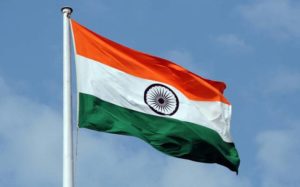Infants die in hospital due to lack of oxygen cylinders
As the nation is on the brink of celebrating its 70th anniversary of India’s Independence, lives were snuffed out of 60 infants. Is it time for celebration or time to mourn? Is it time to launch a crusade for the right to life?
As India celebrates its 70th year of Independence, 60 innocent lives were lost for lack of oxygen cylinders in Gorakhpur, in eastern India, the home town of Uttar Pradesh chief minister Yogi Adityanath. These infants were admitted in the state-run Baba Raghav Das Medical College.
Soon, Uttar Pradesh got defensive and aggressive, with the chief minister promising stringent action against the errant officials. He immediately suspended Rajiv Mishra, principal of Baba Raghav Das Medical College Hospital, for alleged negligence. However, the State Government denied the high death toll and asserted that only half of them had succumbed to death due to lack of oxygen.
The deaths of the other infants are being attributed to factors other than shortage of oxygen. State health minister Siddharth Nath Singh stated that some of the children died due to early delivery, sepsis, pneumonia, and being underweight.
He further explained that August is the month when the hospital received a lot of infections, vector-borne diseases and AES (Acute Encephalitis Syndrome) cases. The records of the past four-five years show a death count of 20-odd daily at BRD Hospital in the month of August.
As usual, the tragedy snowballed into a political controversy with various parties using the incident to their advantage.
India accounts for about a quarter of the world’s deaths among neonates — infants aged below four weeks.
About four pc of neonatal deaths in India result from pneumonia and 16 pc from sepsis, meningitis or other infections. Each of these conditions may require oxygen as part of the treatment.
According to the National Family Health Survey, 2015-16, Uttar Pradesh, which is India’s most populous state, now also has the country’s worst under-five mortality rate — of 78 deaths per 1,000 live births. This is comparable to that of Mozambique (79), an African nation with half of India’s Gross Domestic Product (GDP) per capita!
Roughly, this means that every 15 seconds, a child, less than five years of age, dies in India. In other words, approx. 2.1 million kids die annually in India, before their fifth birthday.
Pneumonia, diarrhoea, malaria, measles and HIV/AIDS are some of the major causes of infant deaths.
More challenges await those who defy death till they turn into adults—malnutrition, child labour, sexual assault, human trafficking, road accidents, and more.
India, with 1.21 billion people, is the second most populous country in the world, after China. India represents almost 17.31 pc of the world’s population. Every year, an estimated 26 million children are born in the country, which is nearly four million more than the population of Australia.
With India aiming to become a global economic powerhouse and workforce, can it afford such a high rate of infant mortality? It is time to ponder and redeem our pledge towards child welfare, for this alone can ensure a safe, secure and strong future for India.










